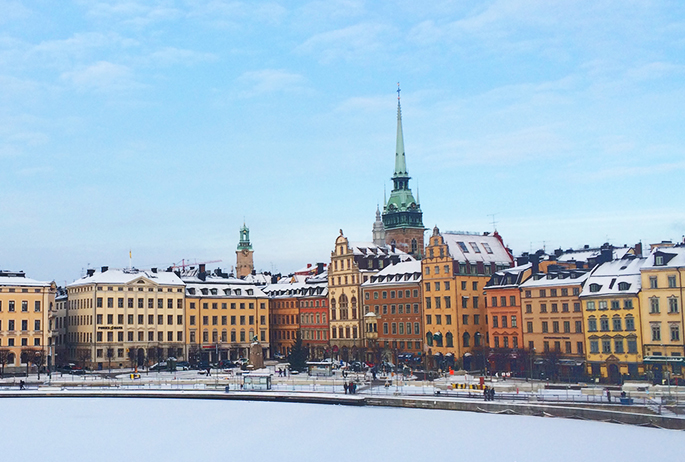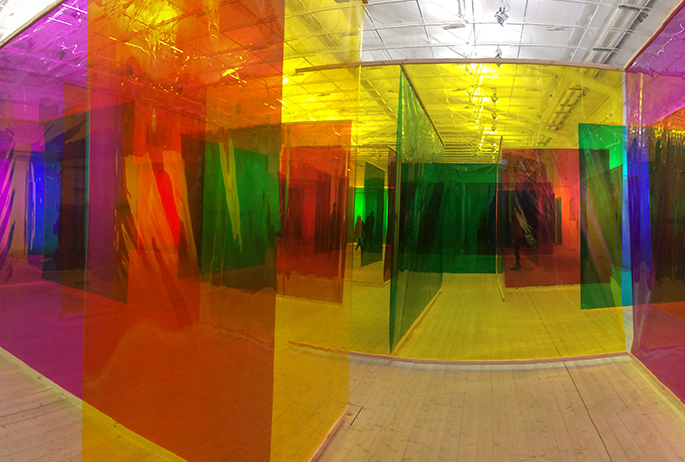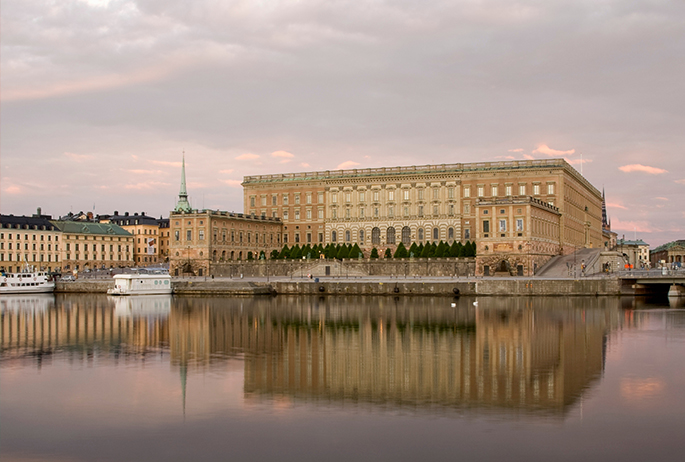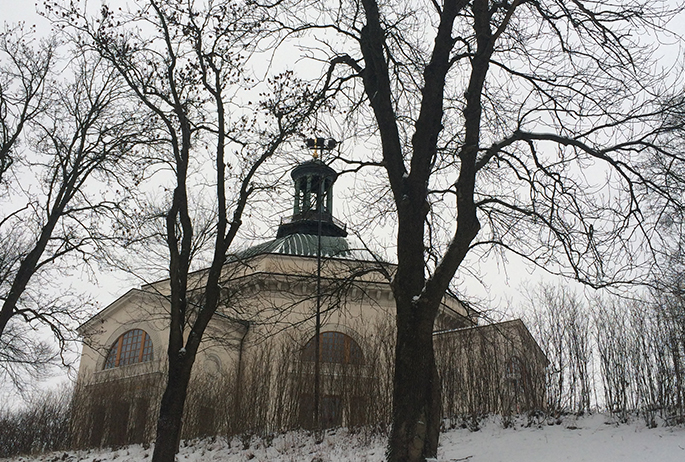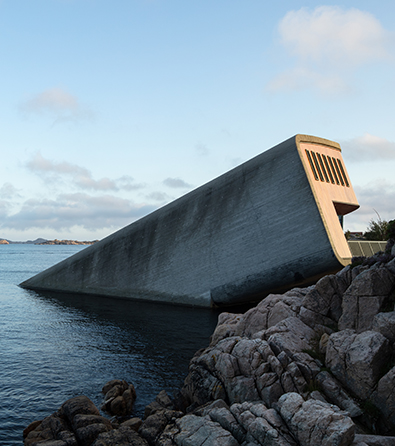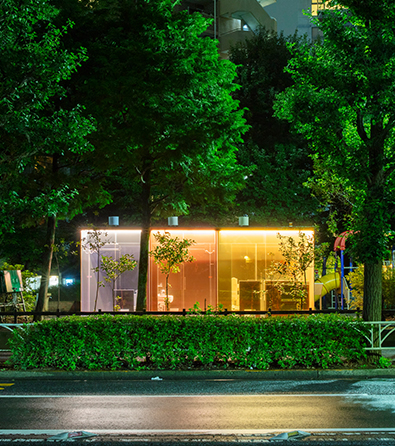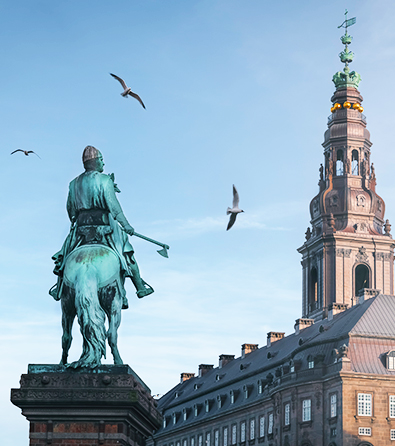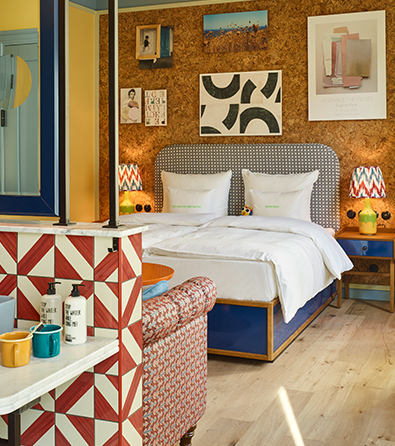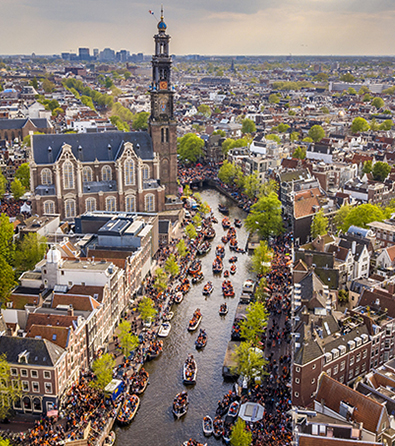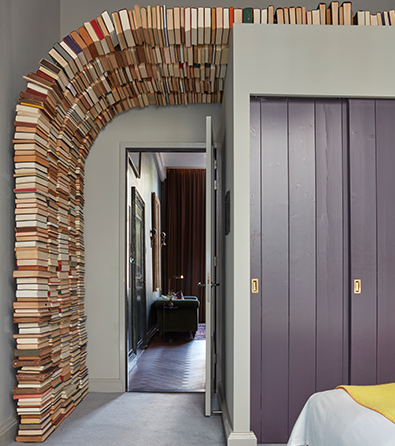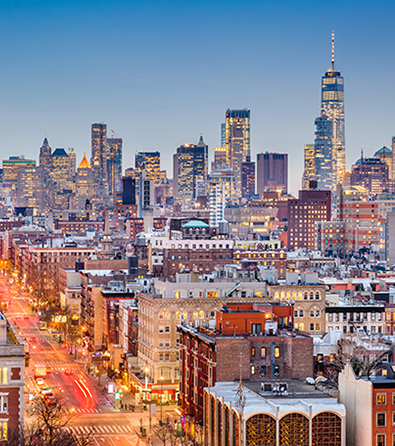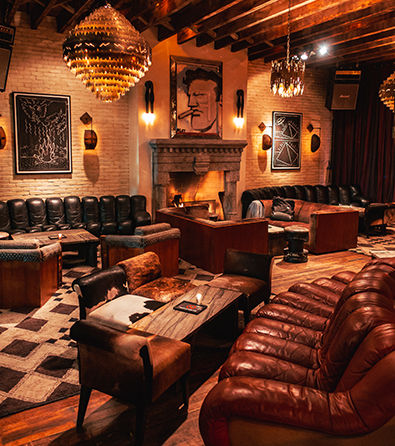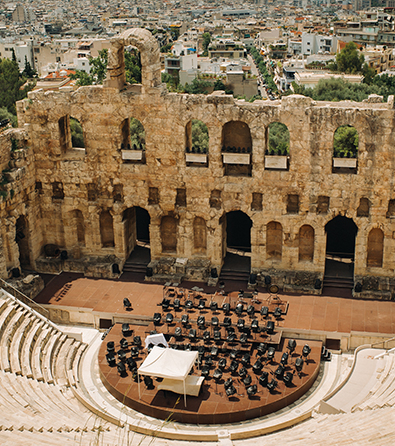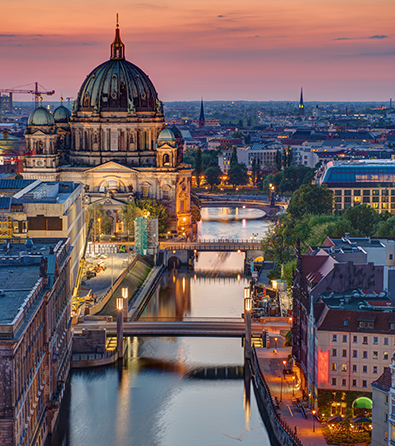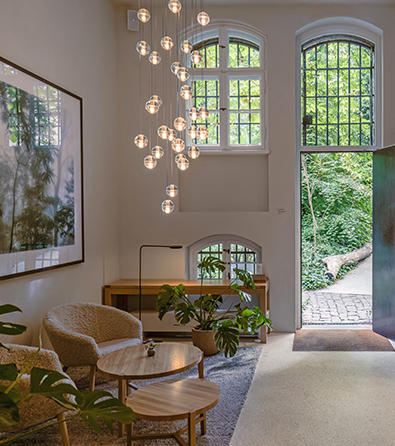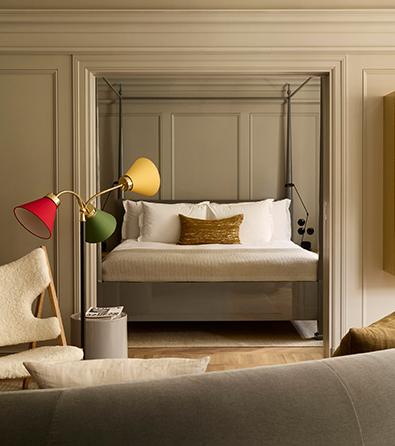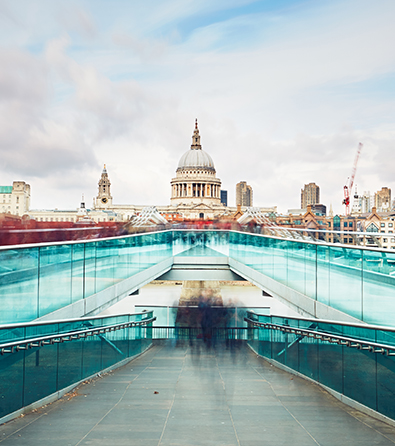Stockholm blends old-world charm with forward-looking creativity across 14 islands where Lake Mälaren meets the Baltic. This culture-first guide maps the city’s best art museums and galleries, design and architecture highlights, metro-art stations, vintage and concept stores, plus seasonal events, so you can plan smart and see more.
To access our exclusive Stockholm Treasure Map, simply click the attached link and become a Culture Treasures member. The map pins every place in this guide and adds bonus cafés, boutiques and cultural venues. Planning your stay? Explore our guide to the best design hotels in Stockholm, along with our curated urban travel essentials and long flight essentials for a comfortable journey.
Art Museums:
Moderna Museet (Skeppsholmen / central Stockholm)
Why go: Sweden’s flagship for modern and contemporary art, with a standout international collection and outdoor sculptures around the island.
Tip: Pair your visit with ArkDes next door, stroll the free sculpture trail, and consider the ferry or the walk over Skeppsholmsbron.
Opened in 1958, Moderna Museet holds major works by artists such as Pablo Picasso, Salvador Dalí, Marcel Duchamp, Louise Bourgeois, Henri Matisse, and Robert Rauschenberg. The current building, designed by Rafael Moneo and completed in 1998, offers generous galleries and courtyards, while Skeppsholmen adds an open-air setting for pieces by artists including Niki de Saint Phalle, Jean Tinguely, and Alexander Calder.
Magasin III Museum & Foundation for Contemporary Art (Frihamnen / Stockholm Free Port)
Why go: Independent museum and collection for contemporary art and artist productions; a key Stockholm platform since 1987.
Tip: The Stockholm venue operates with select openings and loans rather than a fixed year-round schedule, check what’s on.
Founded in 1987 by David Neuman and Robert Weil under Proventus AB and the Robert Weil Family Foundation, Magasin III supports contemporary art exhibitions, new commissions, and acquisitions, with an ethos that extends to education, sustainability, and dialogue across disciplines. Its home is a former warehouse in Frihamnen, adapted for large-scale contemporary work.
Fotografiska (Södermalm / Stadsgårdshamnen 22)
Why go: Stockholm’s hub for contemporary photography in a landmark Art Nouveau customs house, rotating exhibitions by major international and Nordic photographers, plus a scenic café/bistro and event spaces.
Tip: It’s open late most days, so consider an evening visit for waterfront views after the galleries.
Founded in 2010 by Jan and Per Broman, Fotografiska presents a year-round program of temporary shows rather than a permanent collection. The building, an early-1900s customs house designed by Ferdinand Boberg, anchors generous galleries, a museum shop, and spaces for talks and screenings. Past headliners have included Annie Leibovitz and Robert Mapplethorpe, among others.
Artipelag (Värmdö / Stockholm Archipelago)
Why go: Waterside art museum where architecture, nature, and contemporary exhibitions meet, 10,000 m² of Rafael-quiet galleries by architect Johan Nyrén, plus forest paths and a sculpture park.
Tip: Reach it by SL buses from Slussen (474 + 468 to Hålludden) or by seasonal boat from Strandvägen. Leave time for the boardwalk, sea views, and the café/pâtisserie.
Opened in 2012, Artipelag occupies a pine-clad site with about 3,000 m² of gallery space and 22 acres of surrounding nature. Founded by Björn and Lillemor Jakobson, it programs temporary exhibitions and commissions and often extends shows outdoors. Past headliners include Candida Höfer and William Wegman; Bo Nilsson serves as museum director.
Carl Eldh’s Ateljémuseum (Bellevueparken / Vasastan)
Why go: A time-capsule studio museum for sculptor Carl Eldh (1873–1954) in a wooden atelier designed by architect Ragnar Östberg, shelves of plaster casts, tools, and works exactly where the artist left them.
Tip: Hours are seasonal with short guided tours often included; an English tour typically runs early afternoon. Check the current schedule before you go.
Opened as a museum in 1963 inside Eldh’s 1919 studio, the collection centers on the artist’s working material: hundreds of plaster sketches and original models, alongside bronzes, stone and clay pieces, portraits, and memorabilia. The light-drenched workspace and Bellevuepark setting make it one of Stockholm’s most atmospheric small museums.
Contemporary art galleries:
Andréhn-Schiptjenko (Östermalm / Linnégatan 31)
Why go: Influential Stockholm gallery (founded 1991) representing Swedish and international artists across media, with a sister space in Paris.
Tip: The program skews museum-caliber with tightly curated solos, check what’s on before you go.
Founded by Ciléne Andréhn and Marina Schiptjenko, the gallery is known for long-term artist relationships and exhibition production on an international stage. Its Östermalm space supports large installations alongside photography, painting, and sculpture.
Galleri Magnus Karlsson (Norrmalm / Fredsgatan 12)
Why go: A pillar of Stockholm’s contemporary scene, focused on ambitious painting, drawing, and installation, situated inside the Royal Swedish Academy of Fine Arts.
Tip: Pair with nearby Nationalmuseum or a walk through Kungsträdgården.
Since 2005 the gallery has anchored its program at Fredsgatan, promoting both established and emerging artists with a strong narrative and figurative thread, plus international collaborations and art-fair presence.
CFHILL (Östermalm / Riddargatan 13)
Why go: Curatorial platform showing diverse exhibitions, often dialogues between historic and contemporary voices, in an elegant townhouse setting.
Tip: Openings and short exhibition runs are common; check dates and hours.
Since 2015 CFHILL has staged tightly edited shows with Scandinavian and international artists, mixing loans, estates, and living practitioners across painting, photography, sculpture, and new media.
Färgfabriken (Lövholmen / Lövholmsbrinken 1)
Why go: Multidisciplinary institution in a former paint factory, contemporary art, architecture, and urban-development projects with a lively café.
Tip: Combine with a canal-side stroll around Liljeholmen; programs often include talks and experimental formats.
Active since the mid-1990s, Färgfabriken commissions and presents socially engaged exhibitions and city-lab projects, making it a key venue for cross-pollination between art, design, and planning.
Wetterling Gallery (Norrmalm / Kungsträdgården 3)
Why go: Long-running gallery near the park, showing leading Scandinavian and international artists—particularly strong in contemporary painting and sculpture.
Tip: Easy add-on to a central-city museum day; free entry.
Founded in the 1970s–80s era of Stockholm galleries, Wetterling maintains a robust exhibition calendar and artist roster, with regular publications and public-space collaborations.
Konstnärshuset (The Artists’ House) (Norrmalm / Smålandsgatan 7)
Why go: A historic artists’ association venue and exhibition house (built 1897–99), notable for its Venetian-influenced façade and richly detailed interiors.
Tip: Check for current shows and events; the building itself is worth a visit between Norrmalmstorg and Birger Jarlsgatan.
Owned by the Swedish Artists’ Association, Konstnärshuset hosts contemporary exhibitions, talks, and events. The landmark building blends exhibition halls with storied artist spaces, an architectural attraction as well as a cultural one.
Architecture:
Filmhuset (Gärdet / Borgvägen 1–5)
Why go: Swedish Film Institute headquarters in a striking late-1960s brutalist building with cinematic details, home to Cinemateket and Sweden’s only specialist film library.
Tip: Check Cinemateket’s calendar for retrospectives and classics. The building keeps daytime public hours; the library has set opening times.
Designed by architect Peter Celsing and completed in 1968–70, Filmhuset embeds film references in its architecture: horizontal window bands recall film sprocket holes, polished lift doors echo dressing-room mirrors, and the coiling stairwells suggest a reel of film. Inside are two main cinemas (Bio Victor and Bio Mauritz), offices for film organizations, and a reference library focused on Swedish and international cinema.
79 & Park (Norra Djurgården / edge of Gärdet)
Why go: BIG’s cascading “wooden hillside” of homes, terraced green roofs, warm cedar and glass façades, and sweeping views over Gärdet, one of Stockholm’s most photogenic contemporary residential landmarks.
Tip: Best vantage points are from the paths along Gärdet and Sandhamnsgatan. This is private housing, enjoy the architecture from public areas and be respectful. Nearest metro: Gärdet or Ropsten; several buses stop by Lindarängsvägen/Frihamnsporten.
Completed in 2018, pixel-like structure made from 3.6 m × 3.6 m prefabricated modules arranged around an open green courtyard. The tallest corner rises to about 35 m before stepping down toward the park, giving most apartments outdoor terraces and long views while knitting the building into its natural setting.
Avicii Arena (Johanneshov / Globen)
Why go: Stockholm’s giant spherical arena, long billed as the world’s largest of its kind, hosting ice hockey, arena concerts, and major events. Renamed in 2021 to honor DJ Avicii and spotlight youth mental-health initiatives.
Tip: Check if SkyView rides are runningת glass gondolas that travel up the outside for a skyline viewת and note event seating varies ץ
Opened in 1989, the 110-meter-diameter “Globen” anchors Stockholm’s event district and symbolizes the Sun in Sweden’s national-scale Solar System model. Inside, the flexible bowl and technical upgrades support everything from NHL Global Series games to touring productions. The renaming to Avicii Arena in 2021 linked the venue with the Tim Bergling Foundation’s mental-health mission, turning a landmark of entertainment into a platform for awareness as well.
Stockholm Public Library (Vasastan / Sveavägen 73)
Why go: An iconic 1928 library by architect Gunnar Asplund, famed for its cylindrical rotunda and for pioneering open shelves in Swedenת letting visitors browse books directly. A touchstone in the shift from Nordic Classicism toward Functionalism.
Tip: The main building is closed for renovation until late 2027; you can still admire the exterior and nearby Observatorielunden park. A small temporary branch operates at Odengatan 59 during the closure.
Stockholm Public Library is Asplund’s total work of art: a square base wrapped around a dramatic circular reading room, with lighting, furniture, and even the adjacent parkland conceived as one cohesive design. Officially opened on March 31, 1928, it remains one of Stockholm’s most significant civic buildings and a must-see for architecture lovers—even from the outside while renovations are underway.
Design:
Svenskt Tenn (Östermalm / Strandvägen 5)
Why go: Design institution for Josef Frank textiles and Swedish interior classics, styled in full-room settings.
Tip: Go early to browse fabrics and wallpapers upstairs, then loop the accessories floor for giftable pieces.
Founded by Estrid Ericsson, Svenskt Tenn pairs bold prints with refined furniture and lighting. The flagship presents seasonal room installations, a strong glass and tableware selection, and a tea room that makes it easy to linger.
ASPLUND (Östermalm / Sibyllegatan 31)
Why go: Minimal Swedish design, furniture and rugs from ASPLUND’s own collection, plus a tight edit of companion brands.
Tip: Combine with nearby galleries on the Potsdamerstråket of Östermalm. Ask about rug sizes and custom colors.
The store-showroom foregrounds calm palettes, clean lines, and durable materials. Expect storage systems, coffee tables, and hand-tufted rugs designed to mix with Scandinavian and international pieces.
Malmstenbutiken (Östermalm / Humlegårdsgatan 13)
Why go: The home of Carl Malmsten’s Swedish furniture heritage, from classic models to current editions.
Tip: Check finish samples in person. Pair with a walk through nearby Humlegården park.
Inside you will find Malmsten icons alongside contemporary pieces made by trusted workshops. Attention to timber, joinery, and ergonomics defines the offer, with textiles and lighting to complete a room.
Nordiska Galleriet (Östermalm / Nybrogatan 11)
Why go: High-end design showroom for international furniture and lighting, excellent for whole-room planning.
Tip: Book a consultation if you are furnishing a space. Weekend hours are shorter than weekdays.
The multi-level store presents brands like B&B Italia, Cassina, and Flos, with material libraries and styled settings that make comparisons easy. Expect new launches and limited editions.
Modernity (Östermalm / Sibyllegatan 6)
Why go: Museum-quality Scandinavian mid-century furniture and lighting, carefully vetted and restored.
Tip: Ask for provenance. Pieces rotate often, so revisit if you are hunting a specific designer.
The inventory leans Danish, Swedish, and Finnish masters, with rarities by names like Alvar Aalto or Bruno Mathsson. Gallery-style displays highlight craftsmanship and patina.
Jacksons (Östermalm / Sibyllegatan 53)
Why go: Rare 20th-century design, Nordic and international, with a reputation for exceptional finds.
Tip: Serious collectors should inquire about backroom stock and upcoming arrivals.
Expect distinctive seating, lighting, and case pieces with strong form and history. The team handles documentation and restoration to museum standards.
Design House Stockholm, flagship (Södermalm / Götgatan 14)
Why go: Contemporary Scandinavian brand working with independent designers, from lighting and furniture to tabletop.
Tip: Check for special editions and the classics wall. There is also a smaller shop-in-shop at NK.
The flagship shows the full collection in a bright space that encourages mixing categories. The selection balances everyday function with a clean design language.
Posh Living (Norrmalm / MOOD Stockholm, Jakobsbergsgatan 15)
Why go: Curated interiors, furniture, and decor with a focus on texture and warmth, easy to browse before or after lunch in the galleria.
Tip: Ask about in-house interior services for apartments and small commercial spaces.
Floor settings shift with the seasons, blending Scandinavian and European brands. Look for lighting, textiles, and smaller pieces that upgrade a city stay rental or home.
ArkDes – Sweden’s National Centre for Architecture & Design (Skeppsholmen / Exercisplan 4)
Why go: Sweden’s architecture and design museum with timely exhibitions, a research library, and café next to Moderna Museet.
Tip: Admission is free in 2025; Tuesdays and Fridays are late-opening. Pair with a walk around Skeppsholmen’s waterfront.
Founded as the national hub for architecture and design, ArkDes presents rotating exhibitions that connect design, the built environment, and society. The island setting makes it easy to combine with outdoor sculpture and neighboring museums.
Acne Archive (Vasastan / Torsgatan 53)
Why go: Outlet for Acne Studios, past-season clothing, shoes, and accessories at markdowns, good for Scandinavian fashion finds.
Tip: Expect frequent restocks and lineups on weekends; sizes move fast. If you’re furnishing, Acne’s HQ and stores are nearby but this location is the discount “Archive.”
The shop offers women’s and men’s edits from previous collections alongside occasional showpieces. Staff can often check backstock; visiting earlier in the day helps.
Svensk Form – The Swedish Society of Crafts and Design (Skeppsholmen / Svensksundsvägen 13)
Why go: The national design association, talks, awards, and advocacy rather than a retail store, publisher of Form magazine and host of design events.
Tip: Check the calendar for public programs and partner exhibitions; the office/HQ isn’t a browseable shop.
Svensk Form promotes Swedish design through programming, collaborations, and nationwide chapters. Look for one-off events, award ceremonies, and initiatives supporting craft and contemporary design.
Metro Art:
T-Centralen (Norrmalm / Central hub, Blue Line level)
Why go: The most photographed stop in the system, blue-and-white cave vaults with leaf motifs and worker silhouettes by Per-Olov Ultvedt, the first major metro art commission.
Tip: Go to the Blue Line platforms for the blue vaults; visit off-peak to shoot the ceiling without crowds.
Stockholm’s central interchange set the template for art in the Tunnelbana. Ultvedt’s 1970s scheme paints the exposed bedrock like a cool canopy of branches, intended to calm one of the network’s busiest stations. Upper levels include silhouettes honoring the workers who built the line.
Solna Centrum (Solna / Blue Line)
Why go: A dramatic red cavern with a green “forest” horizon, murals by Anders Åberg and Karl-Olov Björk that weave 1970s social and environmental themes into diorama-like scenes.
Tip: Walk the full length to find the small “peep-show” windows and narrative vignettes; late afternoon light enhances the red vault on camera.
Opened in 1975, Solna Centrum pairs theater-red ceilings with a continuous green treeline. The artists later added scenes about rural depopulation, ecology, and everyday life, turning the station into a visual chronicle of the era.
Tekniska Högskolan (Östermalm / Red Line)
Why go: Science-meets-art by set designer Lennart Mörk, sculptures and murals referencing the four classical elements, a dodecahedron for the cosmos, and nods to technology.
Tip: Combine with a walk through KTH’s campus above; the platform is best for the elements and geometric forms.
Serving the Royal Institute of Technology, the station’s program links earth, air, fire, and water to human ingenuity. Mörk’s mix of reliefs and objects turns the concourse into a playful primer on science and invention.
Universitetet (Norra Djurgården / Red Line)
Why go: Human Rights and Linnaeus, Françoise Schein’s tiled panels tie the UN Declaration to Carl Linnaeus’s travels and contemporary ecological questions.
Tip: Panels run the length of the platforms; pair your visit with the nearby Natural History Museum and University campus.
Belgian-French artist Schein created long ceramic tile friezes, produced on Portuguese azulejos in Lisbon, then installed in Stockholm. The result overlays universal rights, botany, and environmental themes onto a daily commute.
Events and beyond:
Stockholm Design Week (citywide / early February, annually) – Scandinavia’s flagship design festival, exhibitions, open showrooms, talks, and product launches across the city, anchored by Stockholm Furniture Fair. The week turns Stockholm into a design circuit for professionals and enthusiasts alike, with debuts by leading Nordic brands and young designers. Expect a dense program around interiors, materials, and sustainable production.
Stockholm Art Week (citywide / mid-May, annually) – A citywide focus on contemporary art, gallery programs, museum highlights, artist talks, and special openings, timed to the Market Art Fair weekend. Art Week brings international attention to Stockholm’s scene while giving local spaces a shared moment to premiere new exhibitions and projects.
SUPERMARKET – Stockholm Independent Art Fair (early April, annually) – Sweden’s key fair for artist-run spaces, discover experimental work and emerging voices you won’t see in the blue-chip circuit. Expect dozens of artist initiatives from Sweden and abroad, with a strong DIY spirit and plenty of chance encounters.
Stockholm Craft Week (citywide / early October, annually) – The largest contemporary craft event in Sweden, exhibitions, studio visits, demos, and talks spotlighting material practices from wood and glass to textiles and ceramics. The week foregrounds process and place: meet makers, see new commissions, and catch museum partners hosting craft-led shows.
Stockholm Creative Edition (citywide / May, annually) – An independent design festival that complements the spring art calendar, showrooms, pop-ups, and capsule exhibitions from Swedish brands and studios.
Open House Stockholm (citywide / early October, annually) – Architecture festival of guided building tours, get inside landmark and rarely accessible sites with architects and curators. Slots book quickly; pick one neighborhood cluster to minimize travel between tours.
Shopping Delight:
Modernity (Östermalm / Sibyllegatan 6) – Museum-quality Scandinavian 20th-century furniture, lighting, and objects. Expect Aalto, Mathsson, and other Nordic greats presented gallery-style, with rarities that reward repeat visits.
Jacksons (Östermalm / Sibyllegatan 53) – Blue-chip 20th-century design from Scandinavia and beyond, impeccably restored. Sculptural seating, statement lighting, and case pieces with documented histories make this a destination for design lovers.
Nordlings Antik (Frihamnen / Frihamnsgatan 56) – Scandinavian Modern specialists with a tight, scholarly selection. Furniture, lighting, and decorative arts skew Nordic mid-century, with careful notes on designers and materials.
Dusty Deco (Östermalm / Linnégatan 13) – A stylish mix of vintage and new designs, bold forms, rich textures, and statement lighting. The store’s layered displays make it easy to visualize pieces at home, from sculptural tables to plush seating.
Svenska Armaturer (Midsommarkransen / Svandammsvägen 8) – Vintage Swedish glass lamps and restored fixtures, plus reproductions made from original molds. A go-to for period lighting: opaline shades, industrial pendants, and bespoke rebuilds using quality parts.
With the interactive map below, you can compare all available accommodation options in the city and find the best prices from a variety of leading providers.
